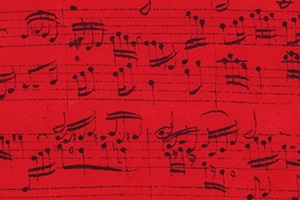MEDITATION
Vinayagar Agaval: medieval lyrics linking Ganesha with yoga practice

Ganesh statue by Musictales.club
Vinayagar Agaval is a popular sacred hymn of South India praising Ganesh—one of the most worshipped deities in the Hindu pantheon who is also deeply revered by Buddhists of various denominations and is well known around the globe mainly for his unique appearance. Indeed, Ganesh is easily recognizable among the myriad of other deities for his elephant head with a curved trunk in the shape of ॐ—Sanskrit calligraphy of the sacred symbol Om.
It is widely believed that honoring Ganesh brings good luck and removes obstacles. He is considered the patron saint of the arts and sciences and is often associated with intelligence and wisdom.
Composed in the form of the unrhymed verse of the iambic meter, Vinayagar Agaval is rightfully recognized as the central masterpiece of Tamil literature and an important highlight of sacred poetry in general. It was written around the ninth century AD by Auvaiyar, a court poetess of the Chola monarch whose reign is associated with a renaissance in South Indian art and architecture.
Listen to Vinayakar Agaval performed by M. S. Subbulakshmi:
Vinayagar Agaval opens with a detailed description of Ganesha's appearance traditionally beginning with the contemplation of his bejewelled feet, thereby reflecting the belief that the presence of a deity in our world can be felt through his earthly shadow or footprint. The poem mainly addresses Ganesha through one of his names Vinayagar meaning the Remover of Obstacles.
From the interpretative shape of Ganesh, Auvaiyar proceeds to the subject of Darshan (the divine gaze that cleansed her of sins), after which she embarks on a personal metaphysical journey focusing on key aspects of yogic practices.
Among other things, she mentions "clarity of ever-fresh awareness" as the goal of meditation which she implements through the rejection of the five senses and the awakening of the six yogic centers associated with respective major chakras to represent the higher states of consciousness.
With a series of sophisticated metaphors, Auvaiyar explains her experience of the physical yoga tradition by describing the energy centers of the body and energy rivers. She talks about the awakening of Kundalini energy symbolized by a coiled snake at the base of the spine and then mentions the "skill of raising by breath" referring to the art of Pranayama—the yoga discipline of breath control.



